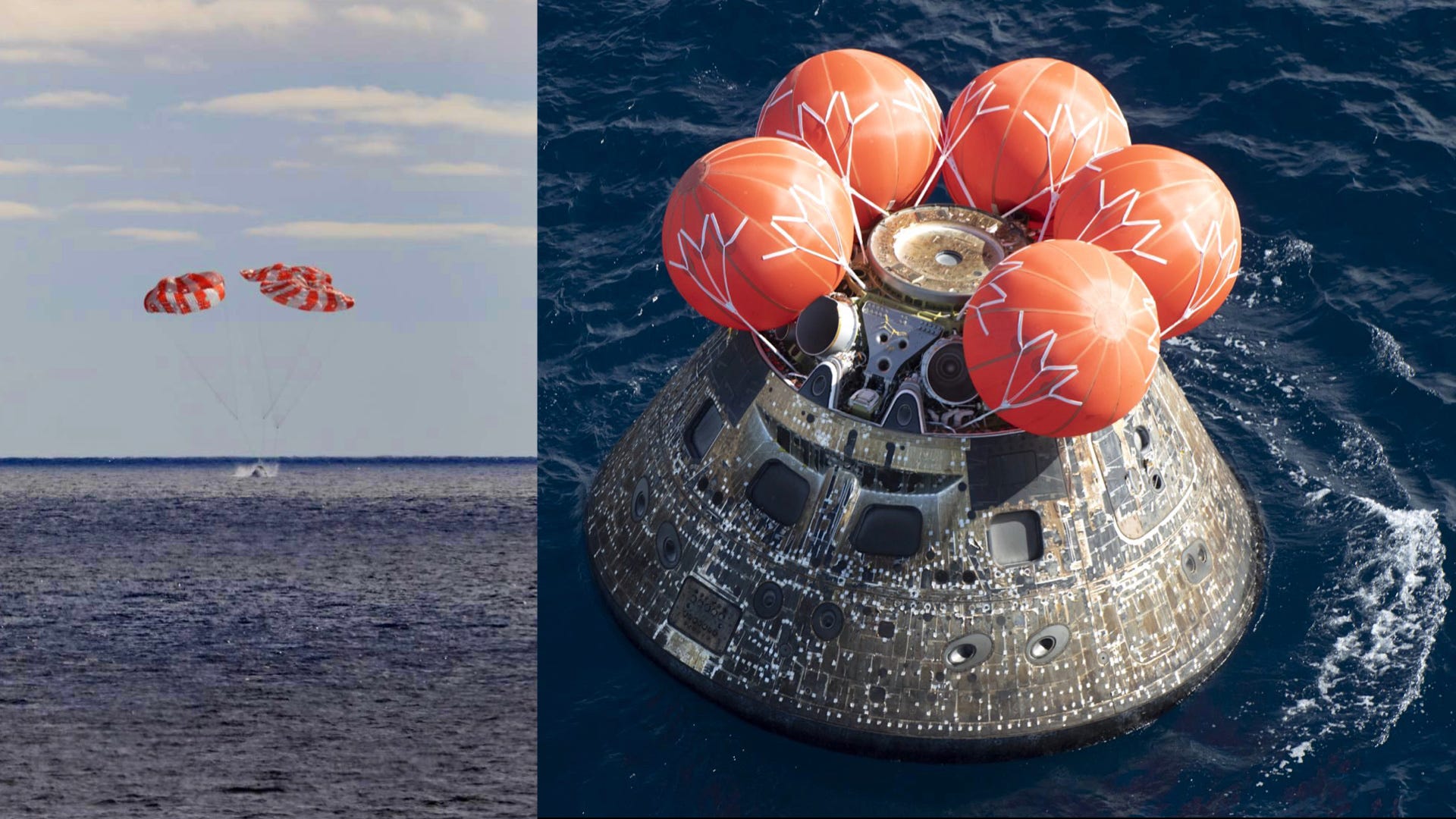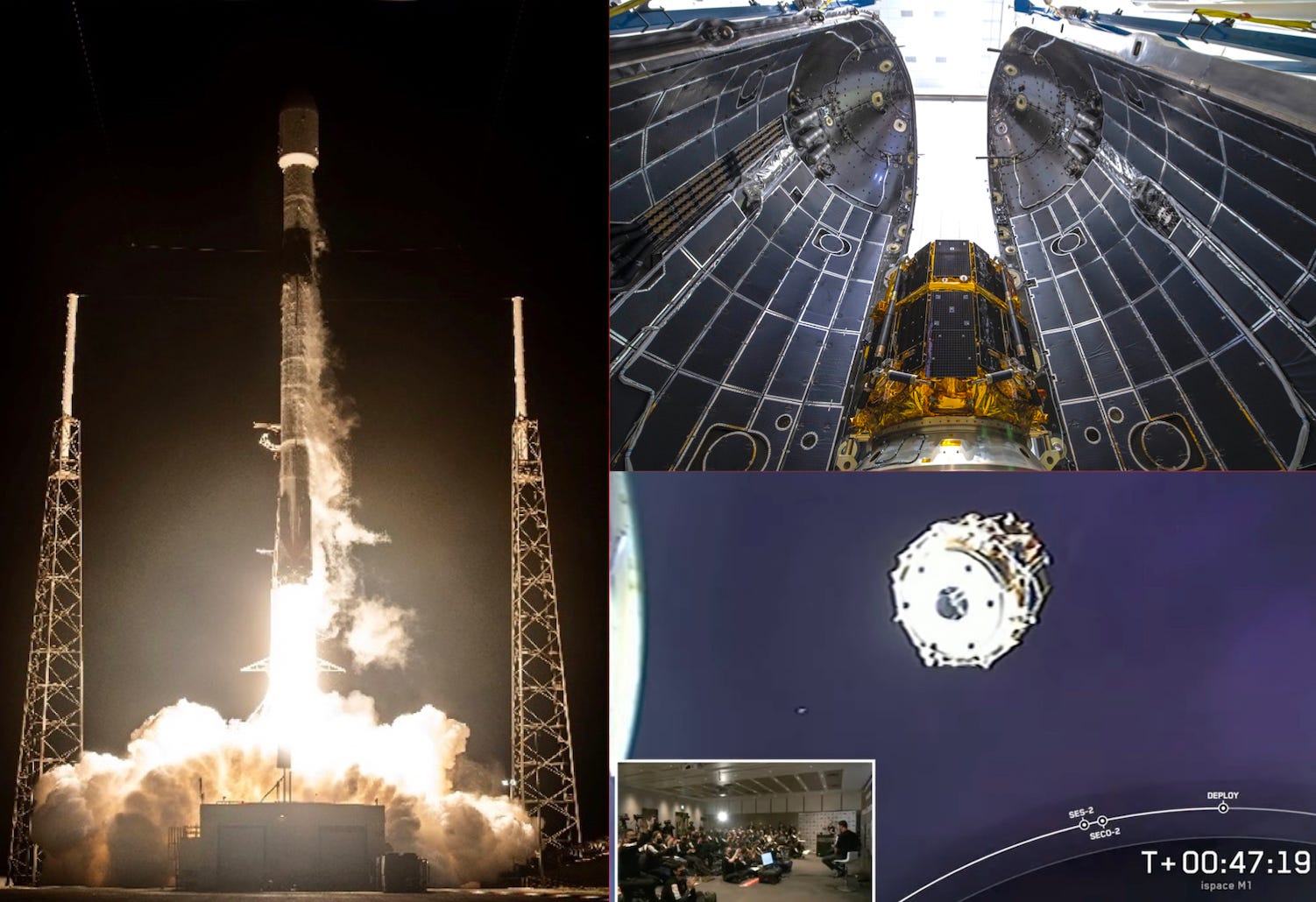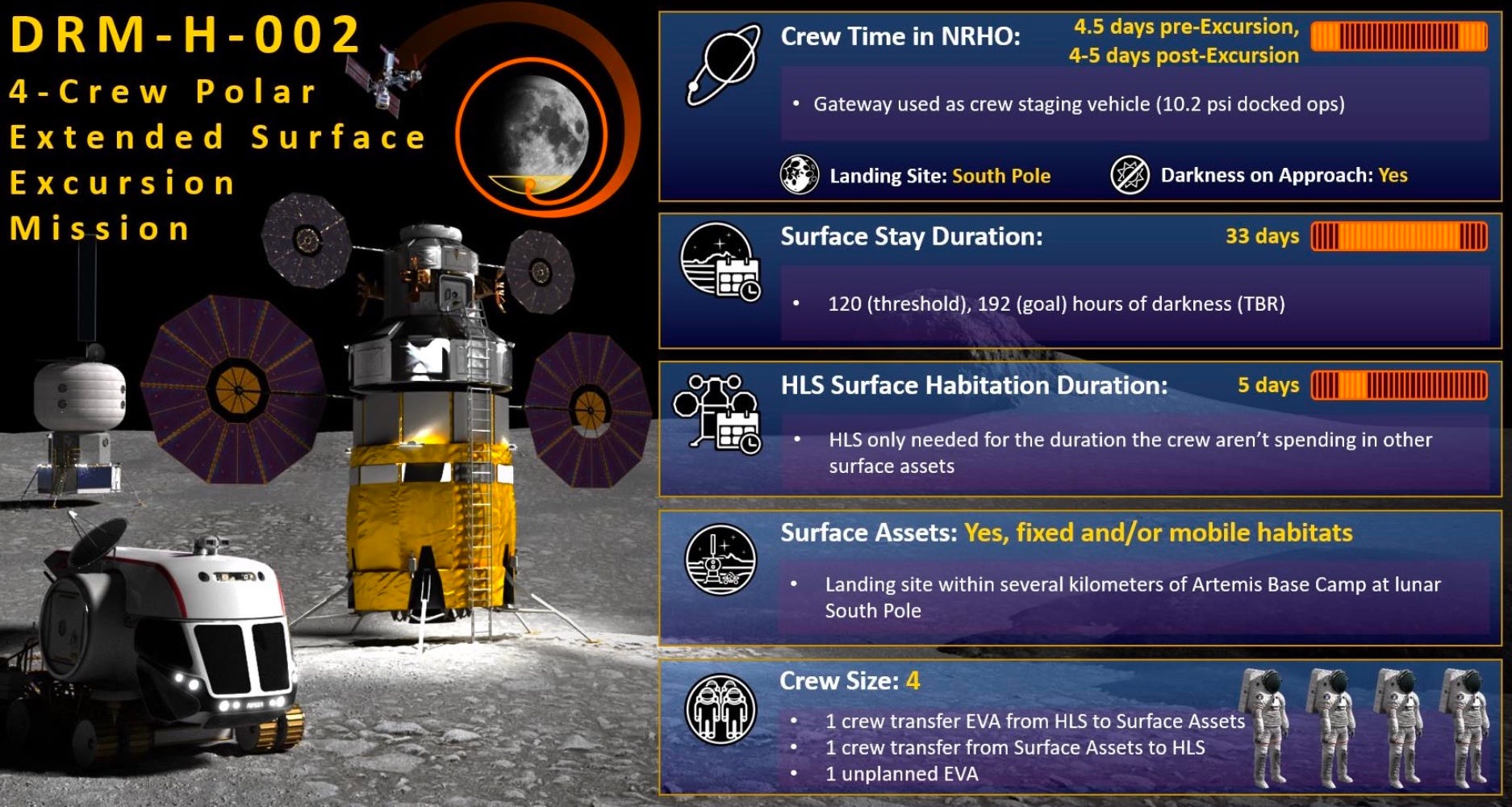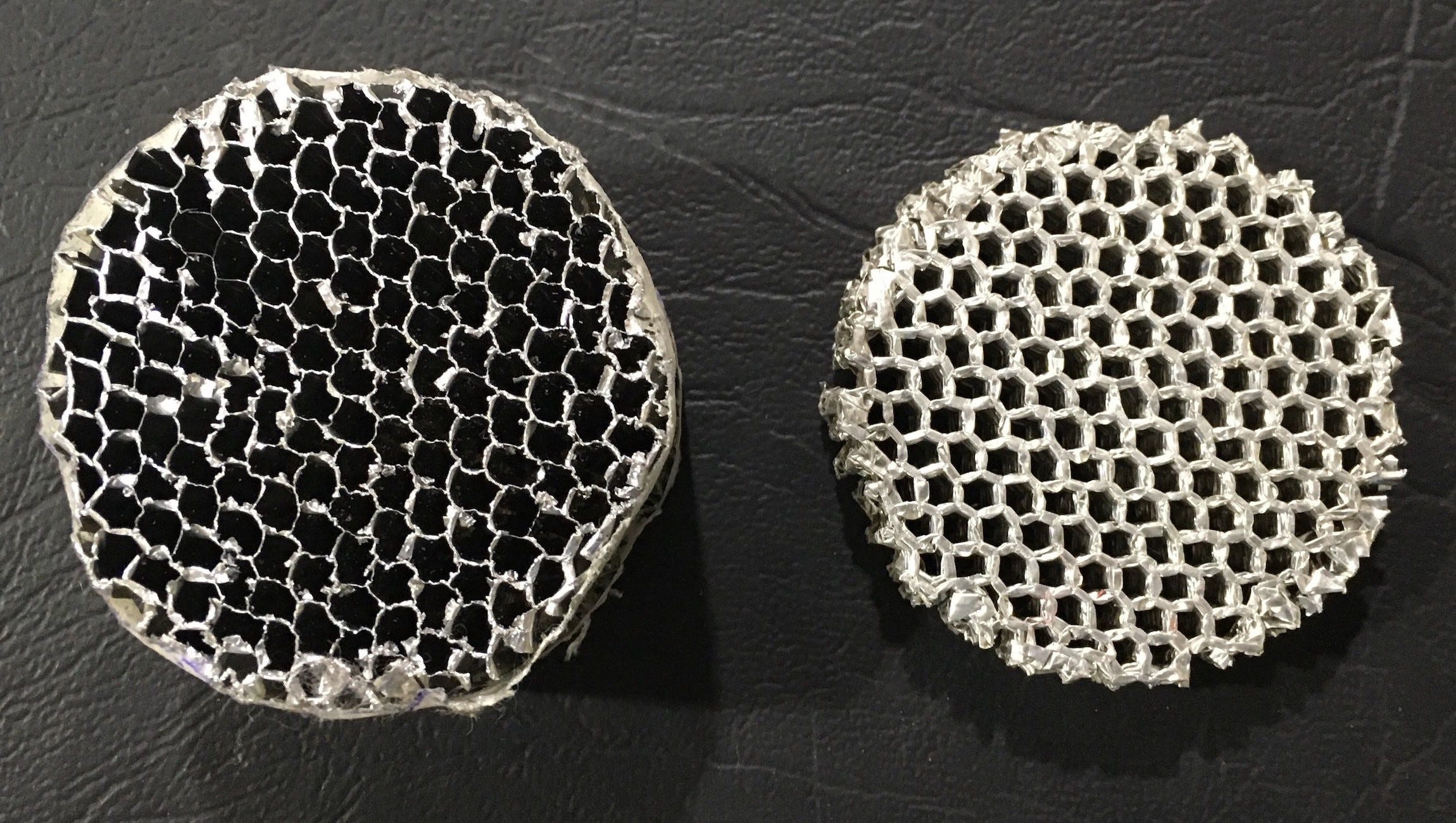Moon Monday #107: NASA’s Orion spacecraft splashes on Earth while ispace Japan launches for the Moon
Orion comes back home with dreams of a crewed Moon landing
Like the skip of a stone on water, NASA’s crew-capable Artemis I Orion capsule incoming from the Moon performed an autonomously guided bounced reentry into Earth’s atmosphere on December 11, subsequently descending with aid from its mighty parachutes and splashing down at the intended fairly gentle speed of ~30 kilometers per hour in the Pacific ocean west of Baja California at 5:40 PM UTC.
The bounced atmospheric reentry enables Orion to more precisely touchdown in the ocean compared to Apollo while also letting future astronauts experience lower g-forces by spreading one high acceleration event into two relatively lower ones. And indeed, the splashdown was within 3.9 kilometers of the target—the mission requirement was to be within 10 kilometers.

During reentry, Orion slammed our atmosphere at 40,000 kilometers/hour, with its heat shield enduring temperatures of about 2700° Celsius, roughly half the Sun’s surface heat and at least two times hotter than spacecraft reentering from low Earth orbit. The heat shield working as designed is a big relief because there was no other way to test it at a relevant scale. Orion will now be returned to NASA’s Kennedy Space Center to first unload its many deep space radiation payloads, and then to analyze its heat shield to know exactly how well it performed.
The European Service Module (ESM)—which proved to be a reliable powerhouse for Orion and propelled it to lunar orbit and back—separated from the capsule several minutes before Orion entered Earth’s atmosphere, and itself safely burned up on a separate, non-interfering trajectory as intended. While Orion plus ESM were on its way to Earth last week, NASA went on to complete more secondary mission objectives, including re-testing propellent sloshing in the tanks to pin down how it affects the capsule’s trajectory and orientation, and characterizing how plumes from Orion’s reaction control system thrusters affect the solar panels. (Related nice read from ESA: How to fly Orion, safely)
Now that Orion has returned safely to Earth, it feels so amazing to talk about Artemis I as the past. The thankfully nominal $4.1 billion mission has infused monumental hope of returning humans to the Moon mid-decade with Artemis III. It also inspired me to write a poem:
A blaze aloft at night
put a glimmer of hope
flying past the desolation
It ignites around Moonshine,
so we can all dazzle
at the suspended blue marble
It twinkles again across the void
for a blistering comeback,
and a tactful splash
Let’s keep the path glowing
for these engines of progress,
so we can ferociously return
To our cosmic neighbor,
like never before.
ispace Japan launches privately built Moon lander
On December 11, ispace Japan launched its first ever Moon mission on a SpaceX Falcon 9 rocket. It carries several commercial payloads, including the UAE’s Rashid rover. If the Hakuto-R spacecraft successfully lands on the Moon in April 2023, ispace will become the first private entity and only the fourth organization in the world to achieve the feat. My article below covers nearly everything on the mission and its payloads as well as the company’s future ambitions, with tons of links as usual:

Many thanks to Epsilon3, Open Lunar Foundation and The Orbital Index for sponsoring this week’s Moon Monday.
More human lunar-flight progress
- With Artemis I now successful, NASA is targeting sending 4 astronauts on a journey around the Moon onboard Orion for the Artemis II mission in late 2024. Jeff Foust reports that the mission crew will be selected in early 2023. The crew will include one Canadian astronaut, in return for Canada providing the NASA-led Gateway lunar orbital habitat’s highly autonomous Canadarm3 robotic servicing system. Eric Berger reports that Artemis II will not launch until 2025 though “because of eight relatively small flight computers.”
- Japanese billionaire Yusaku Maezawa revealed his 8 primary and 2 backup crew members for his purchased crewed SpaceX Starship flight around the Moon. One of the members is Tim Dodd, the Everyday Astronaut! Jeff Foust has more details and commentary on the selection. There’s a chance that SpaceX could fly humans around the Moon before NASA launches crew on Artemis II. This isn’t a competition but the optics of it to that end can’t be ignored.
- NASA has finalized a $3.2 billion contract with Boeing for it to continue manufacturing the SLS rocket’s core and upper stages for the agency’s Artemis III and IV Moon missions as well as to procure critical long-lead materials, components and tooling for producing the same for Artemis V and VI. In the meanwhile, NASA is optimizing SLS’ assembly by moving some of it from Michoud to the Kennedy Space Center in Florida, beginning with Artemis III.
- Blue Origin- and Dynetics-led teams have submitted their “sustainable” lander proposals to NASA to bid against SpaceX’s Lunar Starship on all future crewed Artemis landings after Artemis V. NASA will announce the winning proposal in June 2023 after thorough evaluation. When previously competing for Artemis III, Blue Origin teamed up with Lockheed Martin, Northrop Grumman, and Draper. This time Blue has onboarded Boeing, Astrobotic, and Honeybee Robotics as well whereas Northrop Grumman switched sides to work with Dynetics.

More Moon
Astrobotic’s first Moon lander, targeting launch in Q1 2023 as part of NASA’s CLPS program, is undergoing a string of space environmental tests to ensure its nominal functioning during all parts of the mission. Last week it successfully completed launch vibration and acoustic testing.
I was planning on writing a concise overview of China’s future lunar missions in this very edition but The Orbital Index beat me to it. So here are just some additional tidbits instead based on the latest available updates.
Chang’e 6 will carry three European scientific instruments on the lander. Due to engineering constraints, the landing is expected to be at a similar latitude to Chang’e 4’s Von Kármán crater landing site. The Chang’e 6 orbiter will carry a Pakistani CubeSat called “ICUBE-Q”, which would be the country’s first Moon mission.
Last week China’s space agency revealed more Chang’e 7 mission details, including candidate south polar landing sites, and has put out a proposal call for international scientific payloads to be onboard. Chang’e 7 will also carry UAE’s Rashid 2 lunar rover.
Russia and China are expected to soon sign the formal agreement for collaborating on the International Lunar Research Station, a long-term scientific base at the Moon’s south pole. The South China Morning Post reports that China is working on a new nuclear power system for the station’s long-term, high power needs. Relatedly, a megawatt-level reactor designed by the Chinese Academy of Sciences passed a key review in August.
Findings from this year’s annual meeting of the Lunar Exploration Analysis Group (LEAG) are now available. LEAG supports NASA by providing scientific, technical, commercial, and operational analysis of the agency’s lunar exploration objectives.
The Moon Village Association and Japanese space agency are hosting a webinar on December 14 on “Moon surface mobility in the decades to come”. Relatedly, Japan is developing a crewed pressurized rover for future Artemis missions.

Oh, and I’ve changed my username to @moonmehta on Micro.blog and Mastodon, and to @themoonmehta on LinkedIn, Twitter, and elsewhere. 🌝
→ Browse the Blog | About | Donate ♡
